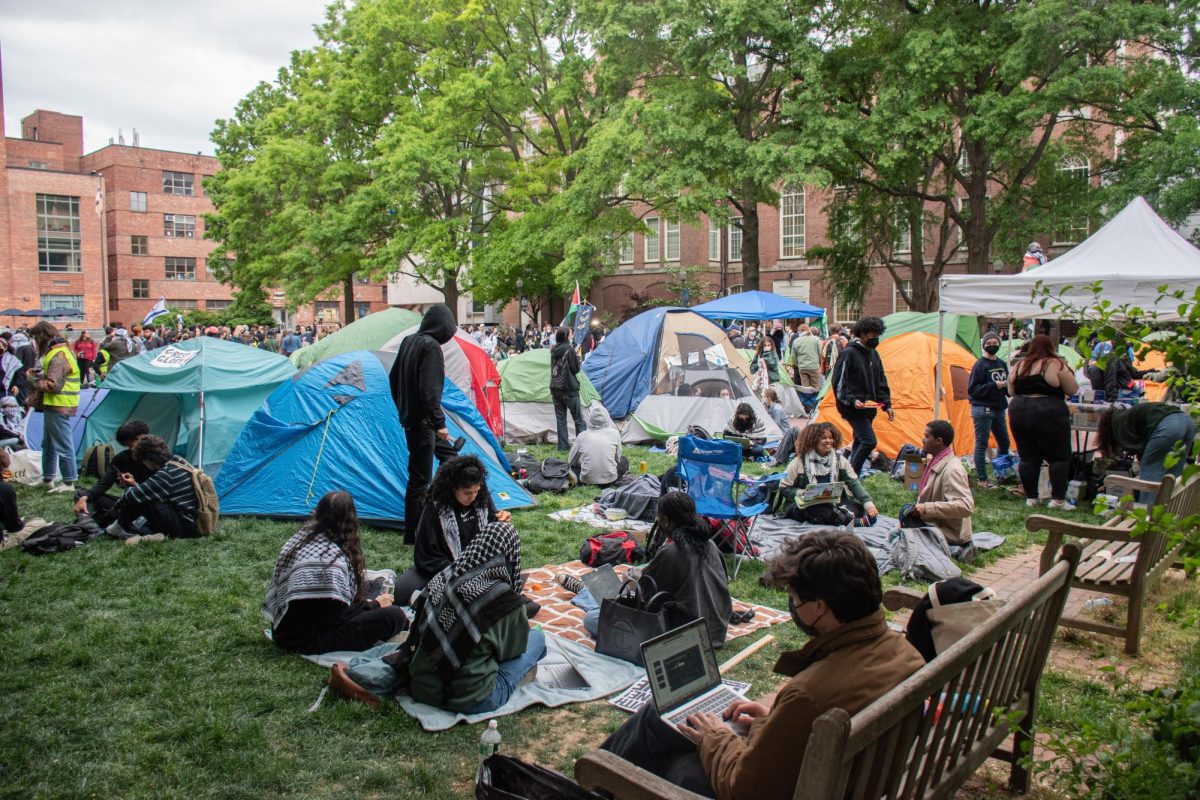With a semester under her belt, GW’s top government and community relations official has demonstrated a hands-off approach to neighborhood issues – a stark contrast from her predecessor who, for years, served as the University’s face to the community.
Renee McPhatter stepped into the role of assistant vice president for government and community relations this summer when Michael Akin ended his 12-year stretch at GW, after virtually building the University’s community relations arm from the ground up. She said she has spent the past few months getting acquainted with the Office of Government and Community Relations and learning the ins and outs of GW.
Akin, who regularly attended neighborhood meetings, became a familiar face to local residents who approached him with gripes ranging from rowdy students to inconvenient construction projects or littering. Foggy Bottom residents often cited him as their lifeline to the University, even during times when GW and neighbors did not see eye to eye.
But McPhatter – a seasoned city government employee – has attended fewer than a handful of community meetings.
She said she leaves that job up to Britany Waddell, the director of community relations, and views her job as a support manager for all the office’s facets.
“[Britany] knows what’s going on and all with the community, and I respect her expertise,” McPhatter said.
She added that she has attended meetings hosted by FRIENDS, a group focused on fostering open dialogue between the University and local residents, but not gatherings held by the Foggy Bottom and West End Advisory Neighborhood Commission.
The ANC is the neighborhood’s top advocacy group that advises city agencies on issues affecting locals, typically on topics such as traffic, parking, recreation, street improvements, liquor licenses, zoning and safety issues. GW has historically experienced tense relations with the body.
In the past year, its commissioners have expressed discontent with projects including the Science and Engineering Hall for lacking neighborhood benefits, and the recently announced plan to bulldoze a block of buildings and townhouses along Pennsylvania Avenue.
McPhatter said she has met each of the Advisory Neighborhood commissioners at different neighborhood events, but because she trusts Waddell’s judgment, she does not personally visit meetings.
Advisory Neighborhood Commission chair Rebecca Coder said Wednesday that she has not yet met McPhatter and hopes Akin’s legacy of maintaining open communication through the University’s levels of leadership would continue in addition to Waddell’s responsiveness.
“I think it’s always important for the neighbors to understand who all the players are, and how the hierarchy is and how they work together,” Coder said.
Alumnus and commissioner Asher Corson, who frequently voices concerns regarding GW’s development projects, said he also has not met McPhatter but looks forward to working with her in the future.
Corson added that it would be difficult for anyone to fill Akin’s shoes, but he thinks Waddell is an excellent liaison between GW and the community and he is pleased with her office’s efforts.
As a manager for the office’s different functions, McPhatter said she oversees how local, city and federal actions could affect GW. She is also helping plan commemorative events to mark the University’s 100-year anniversary in Foggy Bottom in 2012 and has established a neighborhood network for young professionals.
“I think the more people who are involved in community activities, it will benefit the community,” McPhatter said.
She said she hopes to maintain the positive relationships Akin built for GW throughout the city.







